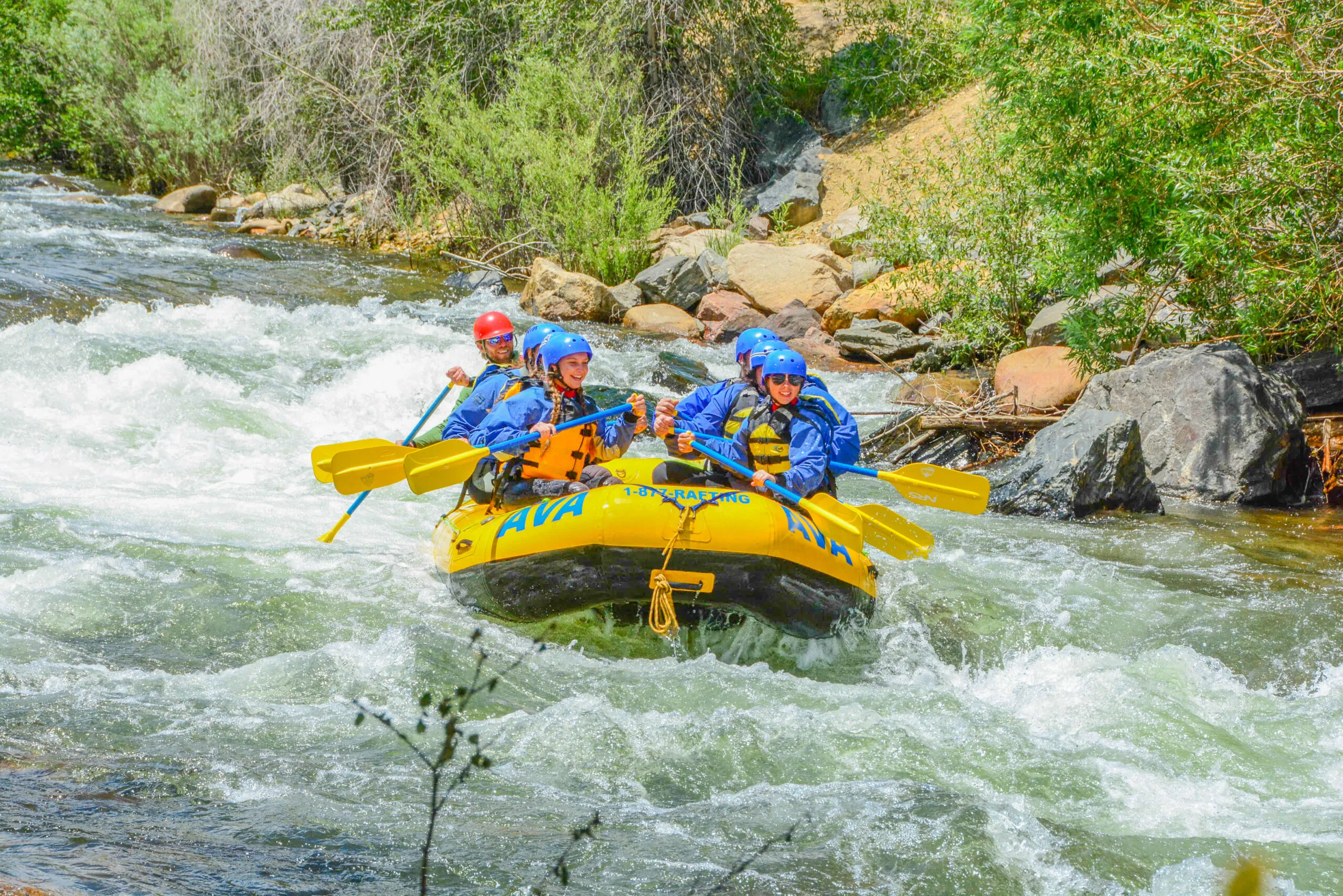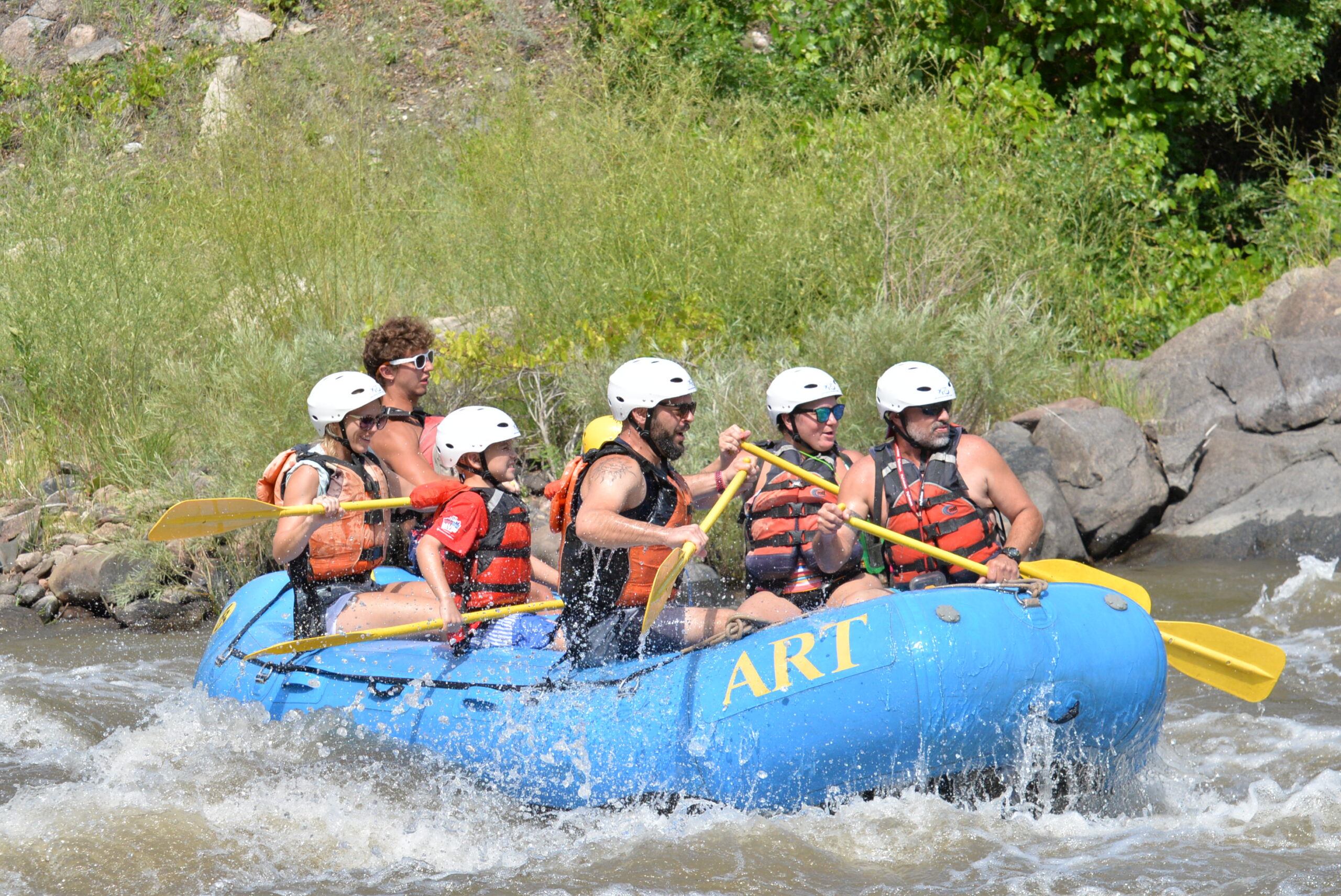Discover the Best White Water Rafting Colorado Has to Deal
Discover the Best White Water Rafting Colorado Has to Deal
Blog Article
The Ultimate Journey: Water Rafting Tips and Tricks
Starting a water rafting adventure is an awesome experience that requires a blend of ability, prep work, and respect for nature's formidable pressures (White Water Rafting Colorado). As the rush of the river moves you forward, browsing with twists and transforms, the art of water rafting reveals itself as a test of both physical expertise and mental skill. From picking the proper gear to recognizing the subtleties of paddling techniques, the trip down the river holds difficulties and accomplishments waiting to be overcome. What genuinely sets apart an amateur from a seasoned rafter exists not simply in the mastery of abilities, but in the skill with which one comes close to the unpredictable dancing with the currents.
Crucial Gear for Water Rafting
To make certain security and convenience throughout water rafting expeditions, it is important to furnish oneself with the essential gear customized to this daring task. The first and most important item of tools is a well-fitted personal flotation gadget (PFD) or life vest. This is non-negotiable for all rafters, as it gives buoyancy in instance of unintentional immersion in water. In addition, a durable safety helmet is important to protect against head injuries, particularly in rough waters or if thrown off the boating.
Moreover, proper shoes is essential for keeping good grasp and shielding the feet from slippery surfaces or sharp rocks. Neoprene booties or water footwear are advised for this objective. It is additionally a good idea to use quick-drying garments, such as a wetsuit or rash guard, to regulate body temperature level and protect against hypothermia in cool water conditions.
Lastly, a trustworthy paddle is needed for navigating through the water effectively. It needs to be light-weight yet resilient to withstand the roughness of rafting. By purchasing these important pieces of equipment, rafters can enjoy their experience on the water with self-confidence and satisfaction.
Choosing the Right Rafting Course
When preparing a water rafting adventure, choosing the appropriate rafting course is important for a satisfying and safe experience. Aspects such as the level of trouble, water conditions, and the length of the course ought to all be thought about before starting your journey.
Firstly, assess your group's skill degree and experience. Different rafting paths are categorized based on problem degrees ranging from Class I (easy) to Class VI (very challenging and hazardous) It is very important to pick a route that lines up with the abilities of all participants to make sure everyone's safety and satisfaction.
Additionally, take right into account the water conditions of the route. Some courses may have calm waters ideal for novices, while others might have strong currents and difficult rapids that need more innovative abilities. Looking into the water degrees and prospective hazards of the course beforehand can aid you make an educated decision.
Finally, think about the size of the rafting route. Longer routes may need even more time and stamina, so choose a route that fits within your team's timeframe and physical capabilities. By thoroughly picking the right rafting path, you can establish yourself up for a awesome and unforgettable experience on the water.
Safety Preventative Measures on the Water
Considering the importance of selecting the appropriate rafting path for a safe and satisfying experience, it is vital to prioritize security preventative measures on the water to reduce possible dangers and make certain a successful experience. Prior to getting started on a water rafting journey, guarantee all participants use correctly fitting individual flotation protection devices (PFDs) and headgears to recommended you read protect versus accidents. It is essential to listen diligently to the guide's safety and security rundown, which commonly covers paddling methods, what to do in instance the boating turns, and how to help others if needed. Maintaining interaction with the guide and fellow rafters is essential during the trip to collaborate movements and respond without delay to any type of guidelines or signals. In case of a person falling crazy, follow the overview's directions for swift and efficient rescue procedures. Lastly, recognize the water conditions, such as rapids and obstacles, and adjust your paddling techniques accordingly to browse securely via the program. By adhering to these safety precautions, you can improve the overall experience and minimize prospective risks while water rafting.
Understanding Paddling Methods
Creating efficiency in paddling methods is essential for navigating with varying water conditions and ensuring a successful water rafting experience. White Water Rafting Colorado. Proper paddling not just assists in steering the boating effectively yet also adds to the overall coordination and teamwork required for a enjoyable and secure journey
Among the basic paddling strategies is the forward stroke. This stroke entails dipping the paddle blade completely right into the water and pulling it back along with the plethora, giving propulsion and steering. The in reverse stroke, on the other hand, is important for slowing or turning around down the raft. By mastering the forward and backward strokes, rafters can properly regulate the speed and instructions of the plethora.

Tips for Handling Rapids Like a Pro
To succeed in navigating tough river conditions, experienced water rafters use their mastered paddling methods with accuracy and skill when handling rapids like experienced professionals. When facing rapids, it is crucial to maintain a strong and collaborated paddling rhythm. This rhythm aids the boating preserve its training course and security among the stormy waters. Furthermore, it is necessary to anticipate the activities of the raft and adjust rapidly to changing problems. Experienced rafters utilize their understanding of river dynamics to proactively change their paddling technique, ensuring efficient maneuvering through rapids.

Verdict
In conclusion, water rafting calls for necessary gear, mindful course option, security precautions, mastering paddling strategies, and handling rapids with proficiency. By adhering to these suggestions and methods, adventurers can guarantee a effective and pleasurable rafting experience on the water.

Thinking about the relevance of choosing the right rafting path for a risk-free and delightful experience, it is vital to focus on security preventative measures on the water check to alleviate prospective threats and make sure an effective experience. Eventually, refining paddling methods is key to a effective and thrilling water rafting journey.
In final thought, water rafting needs necessary equipment, careful path choice, safety and security preventative measures, mastering paddling methods, and managing rapids with expertise.
Report this page